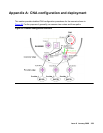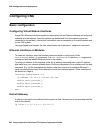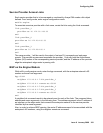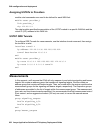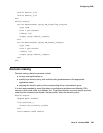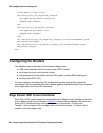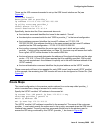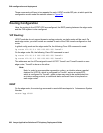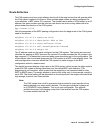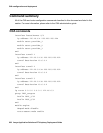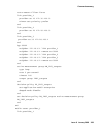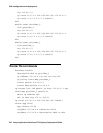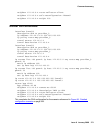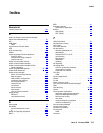
CNA configuration and deployment
366 Avaya Application Solutions IP Telephony Deployment Guide
These commands will have to be repeated for each USTAT module/ISP pair; at which point the
configuration would model the network shown in Figure 95
.
Routing Configuration
Here, the routing to the USTAT VIPS are configured; the IBGP peering between the edge router
and the CNA system is also configured
VIP Routing:
USTAT modules do not support dynamic routing protocols, so static routes will be used. On
each edge router, you static routes are created to each of the CNA tunnels configured on that
router.
In global config mode on the edge router Ra, the following Cisco IOS command is used:
ip route 172.25.5.1 255.255.255.255 Tunnel1
On the edge router Rb, the following Cisco IOS command is used:
ip route 172.25.5.2 255.255.255.255 Tunnel2
ip route 172.25.5.3 255.255.255.255 Tunnel3
The addresses are the VIPs assigned to each USTAT. Tunnel1 and Tunnel2 coexist on one
edge router; Tunnel3 is alone on the other.
Note:
Note: Note: In order to accommodate asymmetric routing—a situation where a packet
destined for USTATa, which is configured for Tunnel1, arrives at router ER2,
which is configured for Tunnel2—static routes may need to be redistributed into
an interior routing protocol, or additional static routes will have to be placed on
each edge router.
IBGP
On the edge router, the router bgp command is used with the enterprise’s Autonomous System
Number:
router bgp 65002




